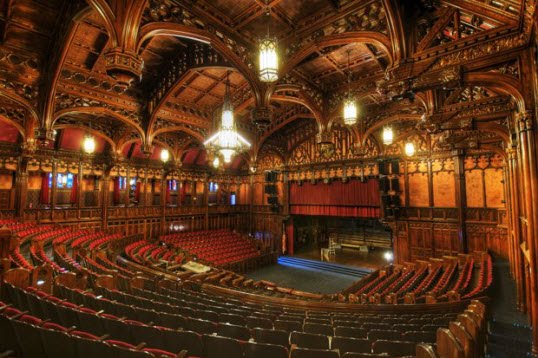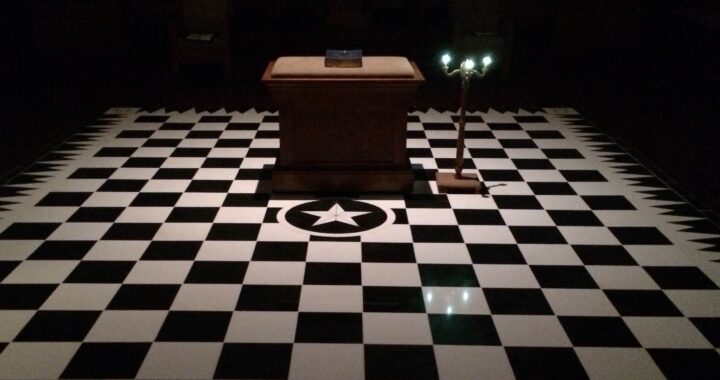Here is the first part of our list of the top 10 masonic buildings in the USA. This list is not in order and is highly subjective. If we left off your favorites, please forgive this oversight.
Guthrie Scottish Rite Temple, Guthrie, OK
This temple was originally build in 1908 for the legislature of the territory of Oklahoma. Once the Scottish Rite took over it kept growing the structure and added a library, theatre, additional lodge rooms, a dormitory and a commercial kitchen. The Valley of Guthrie is one of the few Scottish Rite temples that performs all 29 degrees every year. It takes the labor of love of over 500 brothers to perform each reunion, including the actors, the stage crews, the kitchen, maintenance and the administrative staff. All of which are 100% volunteers.
The Masonic in Detroit, MI
It is the largest masonic structure in the world. The building is 14 stories tall and includes ballrooms, theaters, olympic sized swimming pools, and one of the largest stages in the country (measuring 55 x 100 feet). There are 1,037 rooms total. It was built in 1920 at a cost of $6.5 million, which would be $84 million in 2020. When the building went into foreclosure due to delinquent property taxes it was saved by an anonymous donor who paid off the taxes in full. It was later discovered to be the international superstar Jack White, of the band the “White Stripes”. He has no direct masonic ties personally, however, he wanted to repay the kindness that was shown to his single mother when she was in need during his early childhood days.
House of the Temple, Washington D.C.
This structure serves as the headquarter of the Supreme Council of the Scottish Rite of Freemasonry, Southern Jurisdiction. It was built in 1911 and designed by John Russel Pope, the same architect who also designed the Jefferson Memorial and the National Archives in Washington D.C. Currently it houses the A.A.S.R. of the Southern Jurisdiction, their library and an internationally renowned masonic museum.
George Washington Masonic National Memorial, Alexandria, VA
It is a memorial and museum, an active Masonic temple, a research library, a cultural space, a community and performing arts center, and an important regional landmark. It is the only masonic building in the USA that is supported by Grand Lodges nationwide. Part of the initiation fees of each new Entered Apprentice are being contributed to its upkeep and maintenance.
California Masonic Memorial Temple, San Francisco, CA
Build in 1958, this mid-century building is the home of the Grand Lodge of CA and is located in the Nob Hill district in San Francisco, CA. It is host to the Grand Lodge, a museum and library and several lodge rooms for local lodges. It includes a lodge room that was designed by brother and architect David Hackett. The remodeled temple also includes a study area, a bar, and a lounge with a working fireplace.
More Info:
https://www.freemason.com/top-five-masonic-places-visit-in-us/






